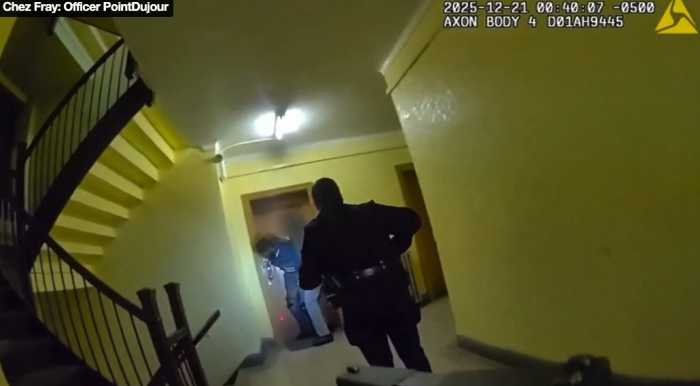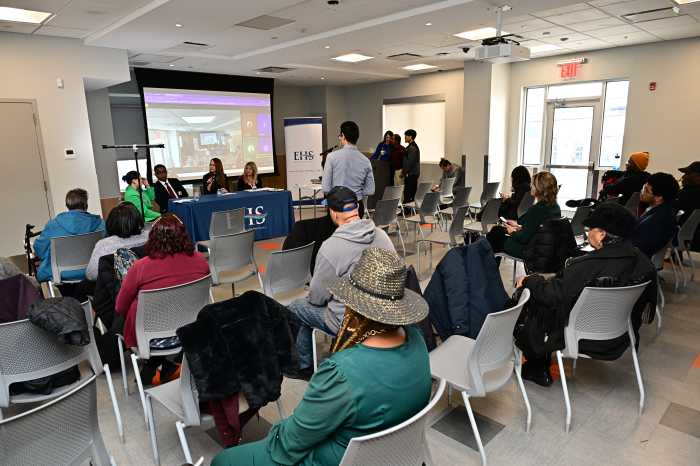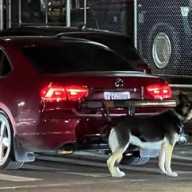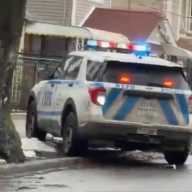BY TONYA M. HUFFMAN
When people think of legend Brian Piccolo, the thoughts and words that come to mind are: No. 41, football, humorous, upbeat, young, brief, cancer, and 26. And of course, as Brian graced the football field with jersey No. 41, allowing his humorous, upbeat personality to shine. This would later help him face his formidable opponent cancer that claimed his brief life at the young age of 26.
But the one word that truly describes the late athlete and summarizes his legacy is courage, for within the word courage is the word age, and throughout Brian’s life at any age, with any task or pursuit, he exemplified courage to the fullest. Brian’s brief life was full, for he accomplished much in two decades and six years. And several decades later, Brian’s legacy still lives on as fans celebrate his life by conversing about his deeds and accolades, commemorate him by naming schools, parks, streets and the like after him, and even present honors to others in his name.
Keep reading as I invite you to learn about the history of Brian Piccolo, who has a Far Rockaway middle school named after him. With the many ways that people celebrate the late great athlete, he has earned legions of new fans. In order to celebrate a life, there has to exist one worth celebrating. And Brian’s life certainly was worth rejoicing about from the time he first came into existence on Halloween Day in 1943.
The early years
Louis Brian Piccolo was the youngest of three boys born to Joseph and Irene Piccolo in Pittsfield, Mass., on Oct. 31, 1943. When Brian was 3, the Piccolo family moved to Fort Lauderdale, Flor. Middle brother Don and oldest brother Joe were athletes and supported Brian playing sports, as when Brian wasn’t tossing a ball in the air solo, the trio was playing some sport together. In consecutive order, Brian’s favorite sports were baseball, football, and basketball.
At a young age, Brian had the courage to play several sports as he starred in Little League and Boys’ League Football, making every local all-star team along the way. From early on, Brian had the courage to think and dream big, as he never doubted he had the talent to one day be a professional athlete.
Brian was very active in sports at Central Catholic High School (CCHS), now known as St. Thomas Aquinas High School, in Fort Lauderdale. As a teenager in the late 1950s, Brian’s major passion was still baseball, and during this time, he considered this his primary sport. Also as an adolescent, Brian played varsity football as an offensive tackle, and life on the gridiron was often frustrating, as in his first three seasons, Central won only eight games.
In 12th grade, the football coach switched Brian from offensive tackle to halfback. Brian was an intelligent and instinctive player on the field who could block, run pass patterns, and catch the football. Brian was also a great locker room entertainer and motivator. With everything Brian was, surprisingly, he wasn’t a fan of attending football practice. Nevertheless, with Brian running the ball in 1960, Central improved to a 4-4 record.
During Brian’s senior season, he gained popularity as an athlete at CCHS. With popularity came rivalry with players at nearby high school, South Broward, including Tucker Frederickson. In fun, Brian’s girlfriend Joy Murrath often teased him about South Broward’s superiority. Something not fun was that Joy’s sister Carol was born with cerebral palsy, but Brian always made her feel welcome and wanted. Brian had the courage to befriend Carol, always making sure she was a part of activities. Brian stayed in contact with Carol throughout his life.
A college player on the rise
Upon graduating from CCHS in 1961, Brian had two scholarship offers, one from Wichita State and the other from Wake Forest. As a young man in college serious about his future in sports, Brian had the courage to forgo playing other sports and instead, stuck to playing football. From this day forward, Brian aimed for NFL bliss.
As a freshman at Wake Forest, he averaged 4.2 yards per carry and scored five touchdowns. The following year, even though the Deacons limped to a 0-10 record throughout the season, Brian improved his numbers as he led the team in rushing with 324 yards.
During Brian’s junior football season, the team’s record improved just slightly to 1-9, but nevertheless, Brian still shined as he topped the team in rushing with 367 yards.
As a senior, Brian’s talent exploded. In the last two minutes of a game versus Maryland where the Deacons trailed 17-14, Brian was called into the game, crossed the goal line for the winning touchdown, and kicked the extra point to put the final touch on a 21-17 victory. In a games versus Duke, Brian ended a 13-year losing streak, almost single-handedly as he broke an Athletic Coast Conference (ACC) record by carrying the ball 36 times to help beat the Blue Devils, 20-7.
The final game of Brian’s college career was against North Carolina State (NCS). In this game, Brian scored three touchdowns in a 27-13 victory over NCS that gave the conference title to Duke. The Demon Deacons finished at 5-5, the team’s best showing in years, and Brian was the key. As a senior, he was No. 1, leading the nation in in rushing with 1,044 yards on 252 carries, breaking the previous ACC record. Also, with Brian’s 111 points on 17 touchdowns and nine extra points, he stayed at No. 1, earning the ACC scoring title, and was named the ACC conference Player of the Year.
With Brian’s record, many people believed he might be the No. 1 pick in the National Football League (NFL) Draft. In spite of Brian’s impressive accolades, shockingly, he went unselected in both the 1965 NFL and the American Football League (AFL) drafts. Teams may have been concerned about Brian’s physique, as he was just 5’10” and weighed only 185 pounds. So in 1964 going into the 1965 football season, the nation’s # 1 college rusher was a free agent.
The road to Chicago
Even though he did not get drafted, Brian had the courage to stick to playing football and accomplish his dream of making it pro. In the meantime, Brian and Joy decided to get married in Atlanta, Ga., and set the date for Dec. 26, 1964. Brian was invited to play in the North-South All-Star Game in Miami held on Dec. 25, Christmas Day. The Piccolo and the Murrath families gathered in Atlanta to watch. Brian played his heart out, but coaches would often substitute him for a larger player. Despite Brian’s record, most NFL coaches felt Brian was too small and slow for professional football.
But it didn’t get him down, for after the game, Brian had the courage to smile, pack his bags, and fly to Atlanta to marry Joy. They would later have three daughters, Lori, Traci, and Kristi.
At Brian’s wedding reception, a random large bear ice sculpture sat on the buffet to cool the shrimp. The sculpture was deliberate, as word spread that Chicago Bears Coach George Halas invited the newlyweds to honeymoon in the Windy City because he had plans for Brian. Soon, a press conference was held, officially announcing Brian signing with the Chicago Bears. Brian actually had some options, as the Cleveland Browns and the Baltimore Colts called. But as the Bears offered him the most money, and as the Bears was NFL’s worst rushing team, Brian saw a golden opportunity to play immediately. Little did Brian know that upcoming Bears’ draft choice Gale Sayers would be both his competition and comrade.
In June of 1965, Brian was selected to play in the Coach’s All-America Game, but unfortunately, a torn hamstring kept him from playing. As of July, Brian’s leg had not fully healed for rookie training camp, he was offered a job on the taxi (practice) squad, and he accepted.
As Brian captained the offense, veteran and fellow Wake Forest graduate Bill George captained the defense — the duo was known as the “Beavers.” Endeavoring to prove his NFL worth, Brian busted his tail in practice. As Brian recorded time on the taxi squad, Gale was enjoying a breakout campaign, scoring touchdowns, being named Rookie of the Year, and just commanding attention as his every move kept fans on the edge of their seats each time he even touched the ball.
In 1966, Brian hoped to start and share carries with Gale, but as running back Jon Arnett reneged on retiring, Brian’s plans to breakout were further put on hold, and hence, Brian played on special teams. In spite of it all, Brian had the courage to hang in there, for brighter days were ahead.
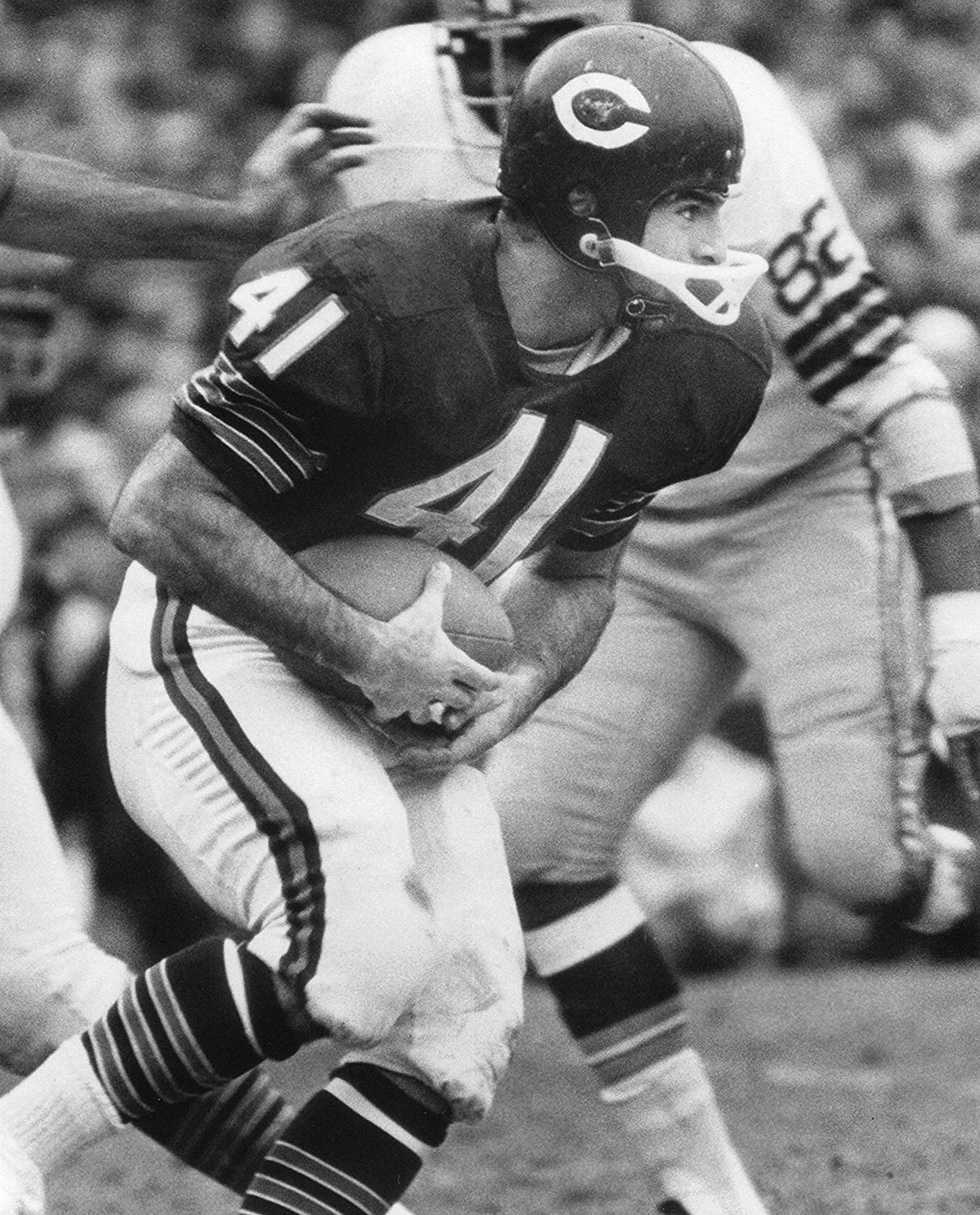
In 1967, Brian got more playing time, backing up superstar starting tailback Gale. Brian gained 317 yards and averaged 4.1 yards per carry. Not only did Brian and Gale spend time together playing on the gridiron, they also spent time together off the field. Brian had the courage to forge a friendship with his Black teammate Gale as they were the first interracial pair to ever room together, breaking down racial barriers that plagued the country in the 1960s. This was the beginning of a lifelong union for both Gale and Brian as both would help the other through upcoming trying times.
In a press conference on May 27, 1968, the Bears announced the retirement of Coach Halas following 50 years in professional football. New head Coach Jim Dooley stepped in. Dooley was dealt a severe blow when Gale ruptured the cartilage in his knee and tore two ligaments in the ninth game of his first season. Regardless of the odds in his chances playing, Brian assisted his friend in getting back on his feet, working tirelessly to help rehabilitate Gale and assisting him to become the first player to return to football following a massive knee injury.
As Gale recovered, Dooley made Brian the starting halfback for the Bears. In Brian’s first game, he caught seven passes for 92 yards. In a game versus the New Orleans Saints, Brian recorded the only 100-yard rushing performance of his career, carrying 21 times for 112 yards in a 23-17 victory. Brian had a good stretch, starting six games, gaining 450 yards on 123 carries, two touchdowns, and 28 receptions for 291 yards.
Cancer diagnosis
In 1969, Gale finally returned, and although Brian was reassigned to back him up, Brian was given a shot as a fullback after starter player Ronnie Bull was injured. As Gale was welcomed back to the field, the opportunity for Brian as fullback thrilled Gale just as much as the two shared the backfield on offense versus the Minnesota Vikings midway through the campaign. The chance to continue playing together further bonded Brian and Gale.
The Bears were in the midst of a 1-13 season, the worst record in their history, but Brian had finally earned a place in the starting lineup as an undersized fullback. The Bears’ first win came in the eighth game on Nov. 9, a 38-7 home win versus Pittsburgh, and Brian opened the scoring at Wrigley Field with a 25-yard touchdown reception.
In a game versus the Atlanta Falcons, Brian scored a fourth quarter touchdown on a one-yard run, and then voluntarily removed himself from the game. Brian raised great concern among his teammates and coaches as they knew something serious had to be going on, as Brian had never taken himself out of any game, having wanted to prove himself on the gridiron.
Brian developed a cough and had been bothered by chest pains. A chest X-ray was performed on him and doctors spotted a malignant tumor on his left lung. He was diagnosed with embryonal cell carcinoma, an extremely rare form of cancer that develops in a fetus and remains in either the chest or testicles until it causes malignant tumors or lesions.
To many, this was shocking, especially since Brian had actually had a clean X-ray just a few months earlier. Brian was sent for surgery to the Memorial-Sloan Kettering Cancer Center in New York. There, doctors determined that the cancer had spread to his lymph nodes. They hoped that with the complete surgical excision of the tumor and long-range chemotherapy, the prognosis would be good.
On Dec. 10, 1969, Brian was discharged from the hospital, and was scheduled to return in June 1970 for a follow-up exam. In a press conference, Brian announced that unless doctors advised him differently, he intended to continue his NFL career. Brian was optimistic and was normally in good humor about his condition.
After chemotherapy sessions, despite how much the treatment had taken out of him, Brian focused on exercising and getting back into shape. Obviously therapeutic for him, Brian often snuck out of his hospital room to visit sick or injured children, and he loved speaking to people about overcoming illness, especially with family, Gale, other teammates, early rival Tucker Frederickson, and coaches who came to visit him, and he joked about himself and his cancer.
In January 1970, Brian was invited to play in the Astro-jet Golf Tournament held by American Airlines. Brian and Joy made it to Arizona for the three-day event. Here, Brian felt a lemon-sized lump on his chest. One doctor assumed that the lump was a pulled muscle.
As this diagnosis was not satisfying to Brian, he got a second opinion. A biopsy of the lump confirmed it was a malignant tumor consistent with his previous cancer. Lung densities were also spotted on his left lung in the chest X-ray. Brian would receive an intensive course of chemotherapy and possibly surgery.
In March, Brian was reevaluated after the chemotherapy. The lesions on his lung had grown, and the tumor on his chest had also grown and was now uncomfortable. In April, a mastectomy of Brian’s left breast and the dissection of his lymph nodes was performed. The lesions had gotten worse, so Brian’s left lung was surgically removed. Doctors also implanted remaining tumors with radioactive iodine seeds and ran radiation therapy on Brian.
Six weeks later, Gale was presented the George Halas Award as the league’s most courageous player for the 1969 season. In recalling the several visits he had to the hospital to see Brian, and in viewing his optimism and inner strength, in Gale’s acceptance speech, he told the crowd that Brian was more deserving of the award than he.
Gale said, about his best friend Brian, “He has the heart of a giant and that rare form of courage which allows him to kid himself and his opponent — cancer. He has a mental attitude which makes me proud to have a friend who spells out ‘courage,’ 24 hours a day, every day of his life. Now you flatter me by giving me this award. But I say to you here and now, Brian Piccolo is the man of courage who should receive the George Halas Award. It’s mine tonight — and Brian Piccolo’s tomorrow. I love Brian Piccolo. And I’d like all of you to love him, too. And tonight, when you hit your knees: Please ask God to love him.”
There wasn’t a dry eye in the room. Gale later gave the trophy to Brian.
The final weeks
On June 4, 1970, it was determined that a tumor had invaded Brian’s lower left chest wall, and the cancer had spread to his liver. During his final weeks, Brian still remained optimistic about beating cancer and leaving the hospital. A delirium due to shock had Brian telling Joy and his friends how much better he felt and that he was going to make it out of the hospital.
Brian died on June 16, 1970, as the cancer had invaded his most resilient organ, his heart. Gale Sayers and Dick Butkus were among the six Bears’ teammates to serve as pallbearers at Brian’s funeral at Christ the King Catholic Church in Chicago on June 19. Brian was buried at Saint Mary Catholic Cemetery in Evergreen Park, Ill. Brian Piccolo may be gone, but not forgotten.
Immortalizing Brian
In 1971, a year following Brian’s passing, his story was immortalized in the made for television movie, a movie later shown in theaters entitled, “Brian’s Song,” that starred James Caan as Brian Piccolo and Billy Dee Williams as Gale Sayers. The movie won five Emmy Awards.
A remake of the original movie”Brian’s Song” aired in 2001 on ABC’s “The Wonderful World of Disney” that starred Sean Maher as Brian Piccolo and Mekhi Phifer as Gale Sayers.
And almost five decades later, the Chicago Bears still honor Brian’s memory as each year, the team presents the Brian Piccolo Award to one rookie and one veteran who exemplifies the courage, loyalty, teamwork, dedication, and sense of humor that Brian displayed each day. Brian’s No. 41 jersey number has been retired by the Bears.

The ACC also honors his memory with the Brian Piccolo Award for the league’s most courageous player.
In 1972, Brian Piccolo Middle School 53 opened on Nameoke Street in Far Rockaway. The school name was chosen by students after the first airing of the 1971 movie version of “Brian’s Song.” The school still bears his name nearly 50 years later, which attests to Brian Piccolo’s great legacy and powerful impact on others.

The Brian Piccolo Cancer Research Fund was established in 1970, and several million dollars has been donated to finding a cure to various forms of embryonal cell carcinoma. Today, the disease is almost completely curable.
Brian Piccolo’s journey in life was bittersweet. I truly admire him, would have loved to meet him, and believe that had his health improved and had he lived longer, the sky could have been the limit as to the all-star football player he could have become, and to the goals and philanthropy efforts he would’ve accomplished.
But throughout his brief life, at any age, Brian had the courage to face each challenge head on like the champion he was. Even at his nadir, Brian Piccolo found the strength to encourage others, saying positive words that cost nothing to speak, but that echo volumes to others and hence, are priceless.
It can indeed be assumed that concerning the late, great Brian Piccolo’s courage and spirit, the grandest music from Heaven comes from a Piccolo.




